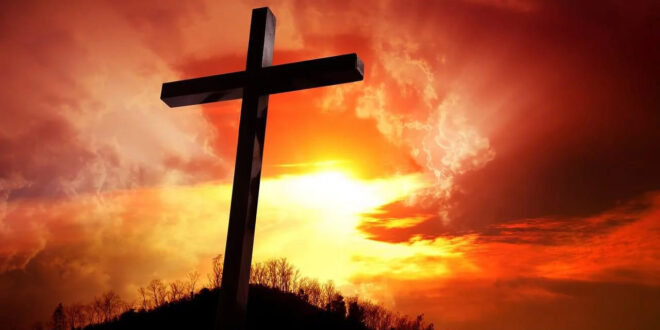By Rachel Tulloch
Wendell Berry tells the story of two friends who lived in a small community in Kentucky in the year 1912. Ben Feltner and Thad Coulter were part of a close-knit agrarian community with strong ties to each other, to the land, and to hard work. Yet tragedy ensued when Thad invested in a risky business deal with his son and lost out. Humiliated and falling into despair, Thad drank himself into a stupor and then headed over to ask his friend Ben for help. Ben did not want to discuss options with Thad in his condition, and so refused to talk with him until the next day when he was sober. However, Thad succumbed to the darkness creeping over him and returned home to get his gun, which he then used to shoot Ben Feltner in a drunken rage. The rest of the story was a beautiful tale of forgiveness and mercy offered by Ben’s family and the community. Yet sadly, Thad himself was unable to experience that forgiveness because he could not bear to live knowing he had killed his best friend, and so ended his own life.
The narrator then makes this profound comment: “People sometimes talk of God’s love as if it’s a pleasant thing. But it is terrible, in a way. Think of all it includes. It included Thad Coulter, drunk and mean and foolish, before he killed Mr. Feltner, and it included him afterwards.”(1)
“God’s love is terrible, in a way. Think of all it includes.” I have often been asked, “Could God not have forgiven people without going through the pain and the violence of the Cross?” As nice as that sounds, reality forces me to ask: When is forgiveness not painful? True forgiveness cannot occur unless the hurt is acknowledged and called for what it is. When you look a wrong full in the face but choose to accept the hurt instead of returning it on the one who did it, that is always painful.
Jesus illustrates forgiveness by telling the story of a servant who owes his master more money than he could possibly repay (See Matthew 18:21-35). The master originally threatens to sell the servant’s family and possessions to get some return for the debt, but when the servant begs for mercy, the master is gracious and forgives the debt. Yet the same servant not only refuses to forgive the debt of his fellow servant, but also has him thrown in prison as punishment.
Sometimes we treat forgiveness and justice as though they are mutually exclusive. If we choose the way of justice, we think the options are reparations or retribution—either the guilty person makes up for a wrong or is punished for it. These are the only options the servant offered his debtor. Since the second servant could not repay, he was then punished. However, the master chose the way of mercy when he forgave the debt, neither requiring reparation nor inflicting retribution. If God has really forgiven us like the master forgave the servant, we ask, then why all the pain and death of the Cross? Does the Cross undermine God’s mercy? Is it merely an underhanded way for God to force repayment from humanity or exact punishment on us?
In asking these questions, we betray a misunderstanding of both justice and forgiveness. Justice can never be achieved by reparation or retribution alone because like the servants’ debts, true wrongs can never be repaid. The hurt and pain caused are not reversible. Punishing the guilty person does not undo the hurt either, even if it brings brief satisfaction to the victim, just as the first servant did not get his money back simply because the other man was in jail. Justice must be about much more than balancing out the wrongs of the world. It must be about making things right, about the kind of restoration that does not reverse the pain, but moves beyond it toward something new.
And just as wrongs cannot be erased by punishment or repayment, they cannot really be erased by simple forgiveness either. When the master forgives the servant’s debt, the debt does not simply disappear. The master takes the loss! He accepts the full brunt of the debt himself. Similarly, when a person forgives, he or she accepts the full brunt of the hurt or injustice rather than returning it on the one who caused it. Although it is painful, this is the way that healing and restoration begin. This is why there is no way to avoid the bloody Cross. And this is why God’s love is terrible. Think of what it includes: us, with our best and our worst, with our failed attempts and outright cruelty, with our wrong motives for right actions and our right motives for wrong actions… us, with the mess we have made of the world, with our brokenness and despair, with our rebellions and inadequacies. We are the ones included in and redeemed by the deep and wide love of God. Paul is astonished by this reality when he emphasizes that Christ died for us while we were still sinners (Romans 5:8)!
Instead of demanding that we pay what we cannot, instead of punishing us for not paying what we cannot, the God we see in Jesus Christ accepts the loss himself and opens his arms even to those who would murder him. The Cross does not represent God’s mercy being tamed by his anger; rather, it demonstrates that God’s mercy is much bigger than we think. The Cross is a graphic picture of God’s terrible love. Think of all it includes.
Copyright (c) 2009 Ravi Zacharias International Ministries (RZIM)
Rachel Tulloch is a member of the speaking team at Ravi Zacharias International Ministries in Toronto, Canada.
(1) Wendell Berry, “Pray Without Ceasing,” in That Distant Land, (Washington DC: Shoemaker Hoard, 2004), 69.
A Slice of Infinity is aimed at reaching into the culture with words of challenge, words of truth, and words of hope. If you know of others who would enjoy receiving A Slice of Infinity in their email box each day, tell them they can sign up on our website at www.rzim.org/Slice




